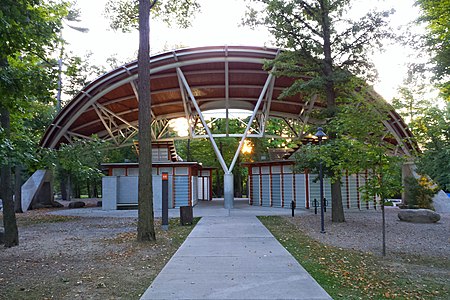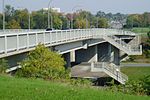Carleton University is an English-language public research university in Ottawa, Ontario, Canada. Founded in 1942 as Carleton College, the institution originally operated as a private, non-denominational evening college to serve returning World War II veterans. Carleton was chartered as a university by the provincial government in 1952 through The Carleton University Act, which was then amended in 1957, giving the institution its current name. The university is named for the now-dissolved Carleton County, which included the city of Ottawa at the time the university was founded. Carleton County, in turn, was named in honour of Guy Carleton, 1st Baron Dorchester, who was Governor General of The Canadas from 1786 to 1796. The university moved to its current campus in 1959, growing rapidly in size during the 1960s as the Ontario government increased support for post-secondary institutions and expanded access to higher education.
Carleton offers a diverse range of academic programs, and is organized into six faculties and more than 65 degree programs. It has several specialized institutions well-regarded in their fields, including the Arthur Kroeger College of Public Affairs, the Norman Paterson School of International Affairs, the Carleton School of Journalism, the School of Public Policy and Administration, and the Sprott School of Business.
As of 2021, Carleton yearly enrolls more than 27,000 undergraduate and 4,000 graduate students. Carleton has a 150-acre campus located west of Old Ottawa South, close to The Glebe and Confederation Heights. It is bounded to the North by the Rideau Canal and Dow's Lake and to the South by the Rideau River. Carleton has more than 165,000 alumni worldwide, producing 7 Rhodes Scholars, 2 Pulitzer Prize awardees, 8 Killam Prize winners, and several recipients of the Order of Canada. Additionally, the university is affiliated with 53 Royal Society Fellows and members and 3 Nobel laureates. Carleton is also home to 28 Canada Research Chairs, 1 Canada 150 Chair, 13 IEEE Fellows and 10 3M National Teaching Award winners.Carleton competes in the U Sports league as the Carleton Ravens. The Carleton Ravens are nationally renowned for their men's basketball team; a team which has won 16 of 19 national championships since 2003.









